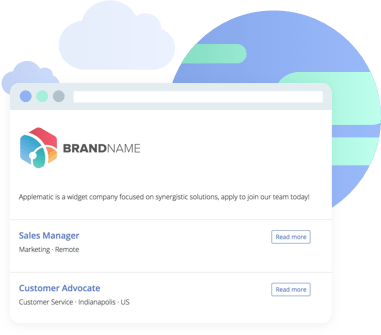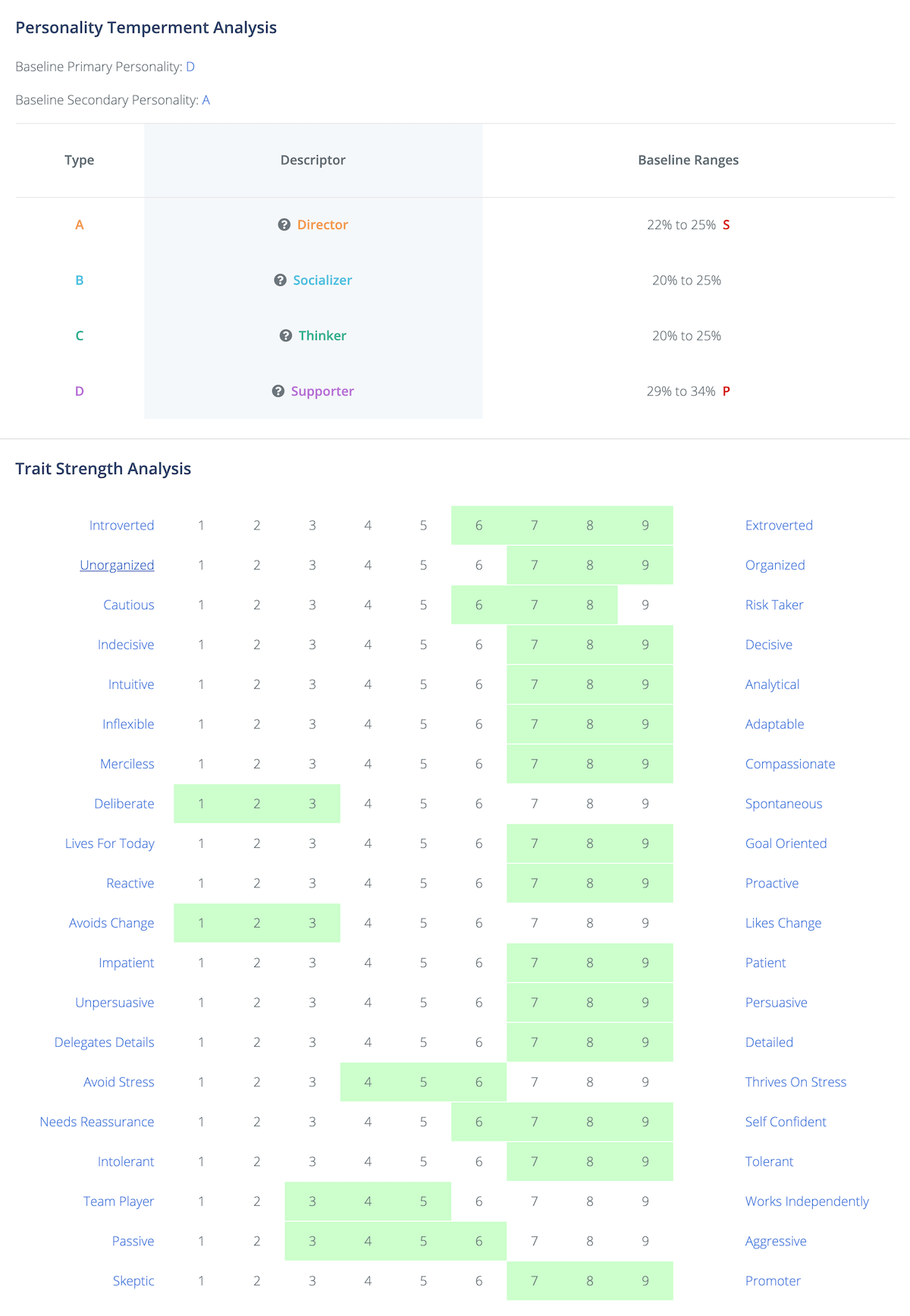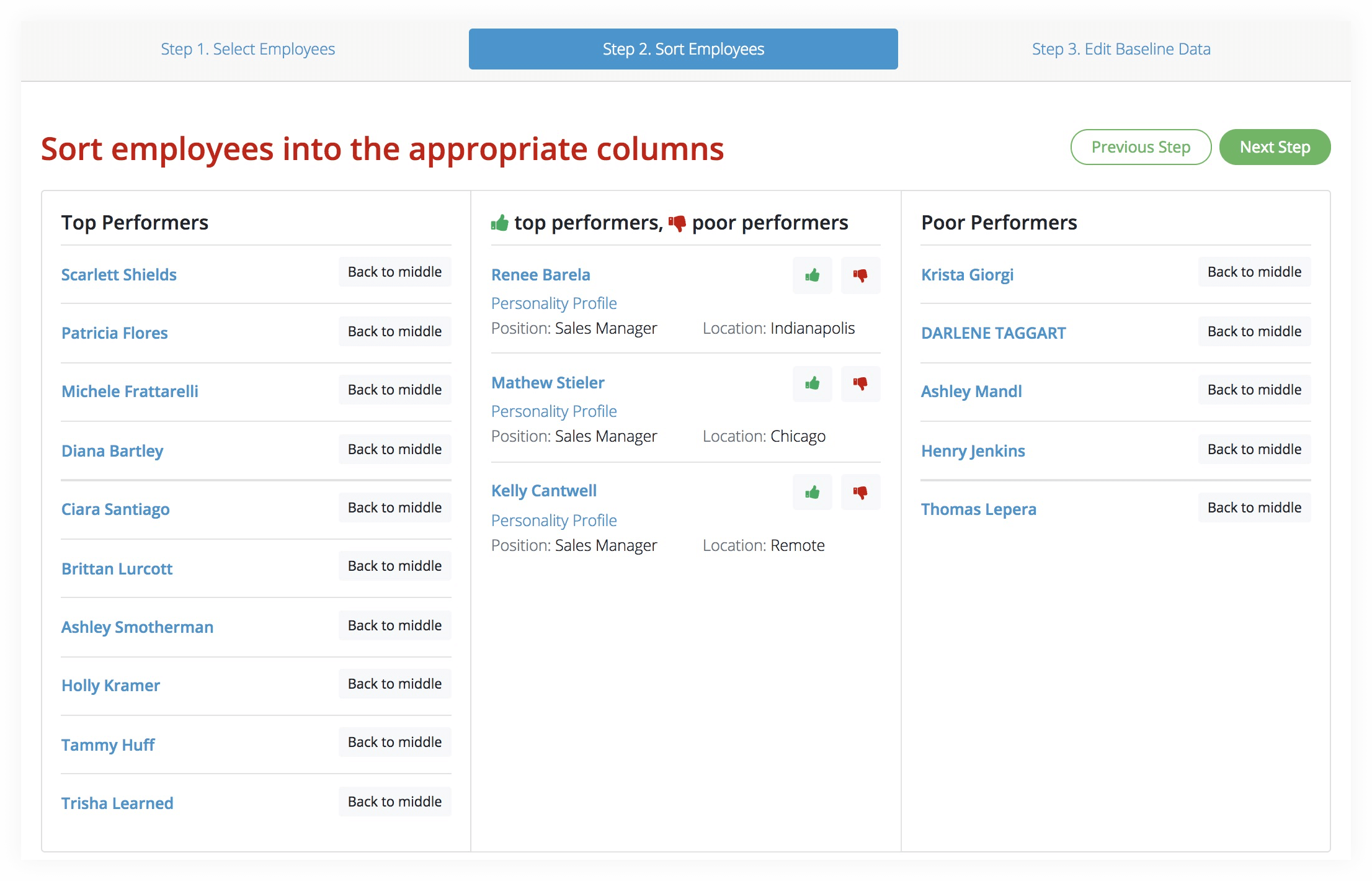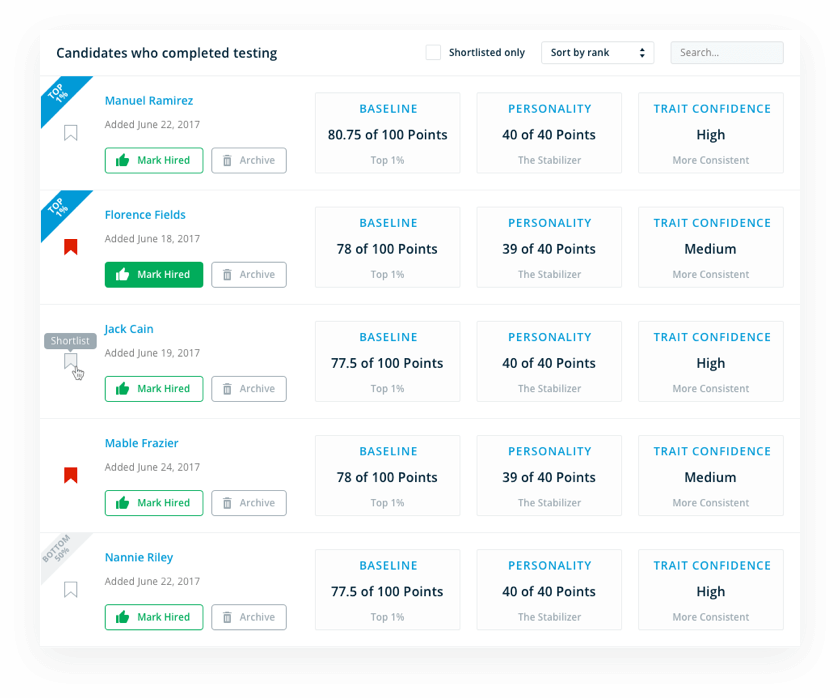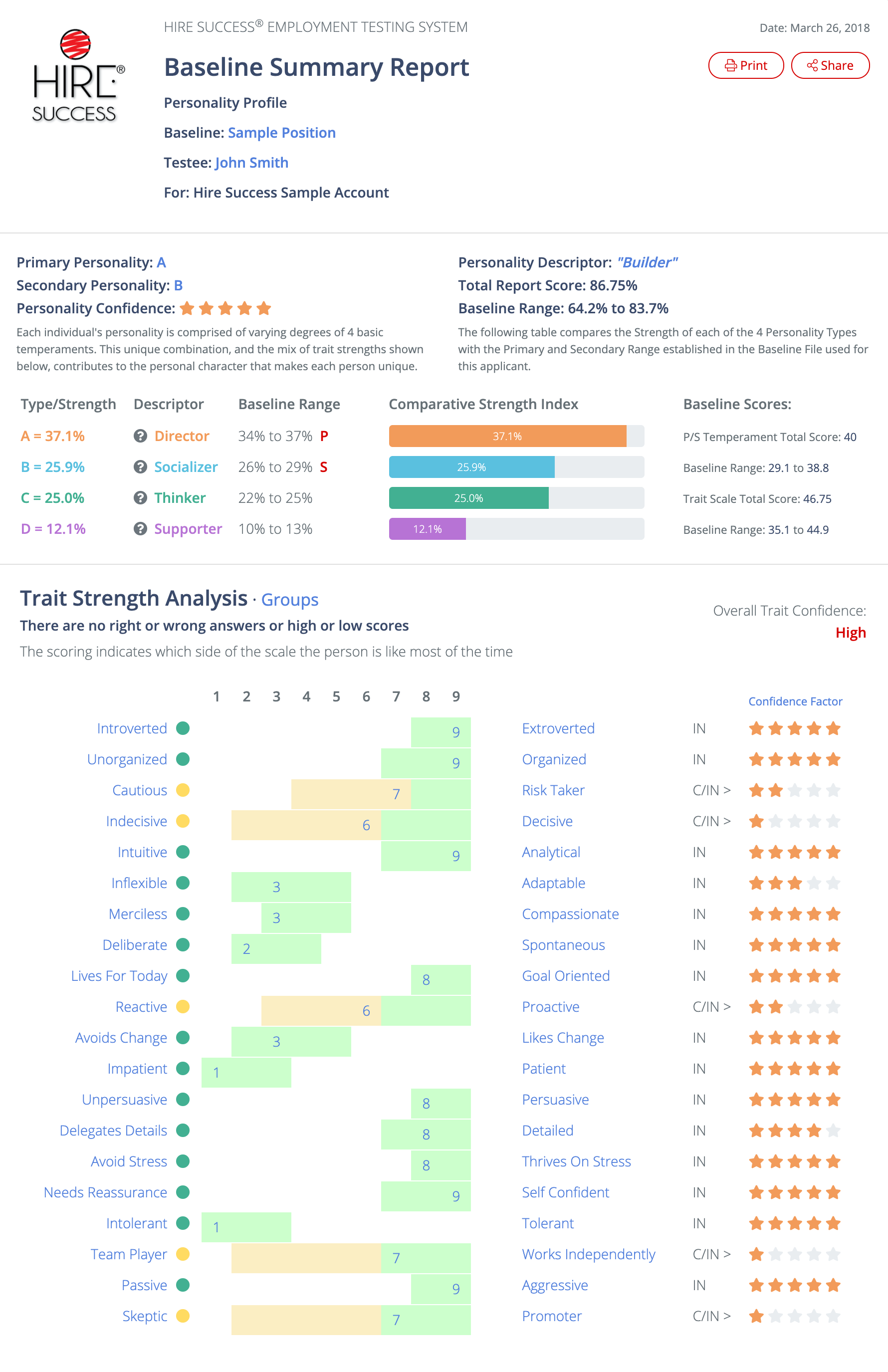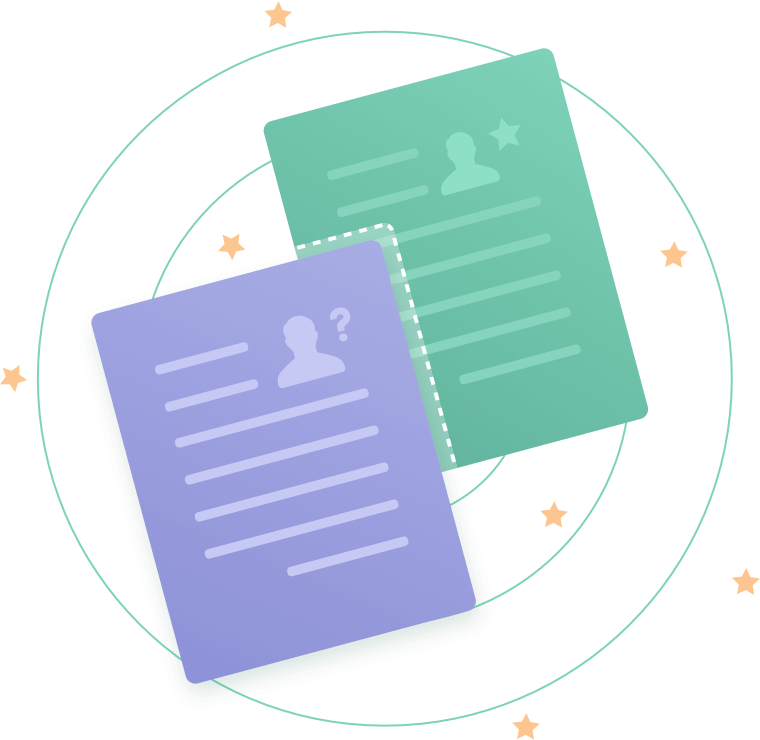
What is a "baseline"?
Some may say "ideal profile" or "employee benchmarking,” but we refer to the task of identifying and quantifying personality characteristics and traits as developing a Baseline Personality Profile. It’s basically putting together a list of ideal standards for hiring or promoting employees in every job at your company.
Developing a job baseline for each position is a great way to outline what an ideal employee's abilities and personality characteristics are so you can quickly identify applicants with similar skills and traits. When it’s time to hire a new employee, you’re more likely to find someone who will be more comfortable, happy, and productive.
